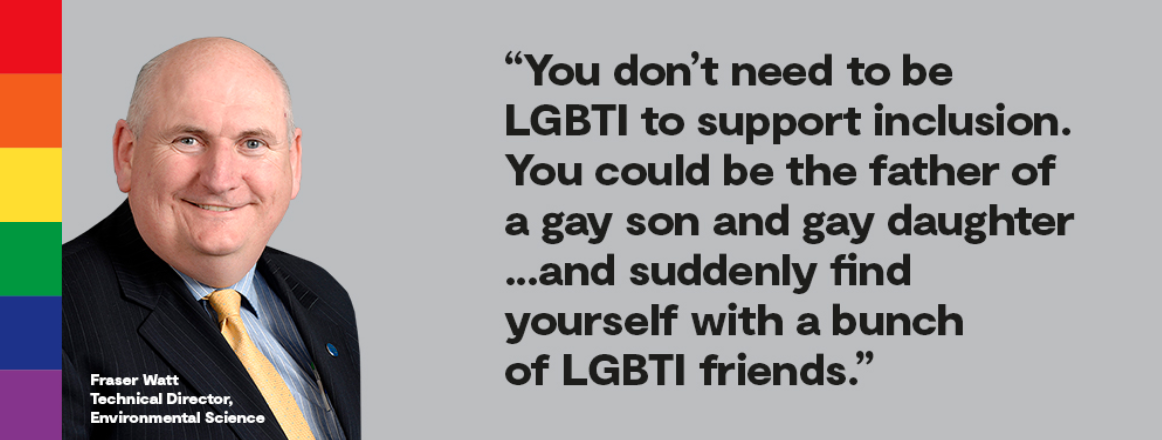 Last week I received an e-mail invitation regarding the development of policies and practices for trans-gender inclusive workplaces, I wondered why I had been selected, I am not trans-gender, but I decided to attend the virtual event anyway, and wanted to expand my knowledge.
Last week I received an e-mail invitation regarding the development of policies and practices for trans-gender inclusive workplaces, I wondered why I had been selected, I am not trans-gender, but I decided to attend the virtual event anyway, and wanted to expand my knowledge.
The event took place during LGBTQ2+and Pride at Work week, the subjects, which I had little or no knowledge, was basically a whole day event, One of the organizers, the Institute for Gender and the Economy at the University of Toronto’s Rotman School of Management partnered to undertake the first Canadian study dedicated to understanding workplace policies and practices for supporting trans and gender non-conforming people—meaning individuals whose gender identity, or personal experience of gender, differs from their sex assigned at birth. They surveyed 69 organizations in Pride at Work Canada’s membership network (a 58% response rate of all members contacted at the time of the survey), which is made up of organizations who are committed to LGBTQ2+ inclusion. These organizations collectively employ more than 700,000 people across Canada.
The aim of the study was to document the policies and practices for supporting trans and gender non-conforming people applied by Canada’s large employers.
Because all respondents are partners of Pride at Work Canada, we believe the results represent a best-case scenario as non-partners and non-respondents are likely to have fewer gender-inclusive practices.
This groundbreaking survey dedicated to gender-inclusive workplace policies and practices in Canada shows that while a substantial portion of organizations surveyed have anti-discrimination policies and training that includes gender identity and gender expression, only a fraction of these organizations has broader inclusion policies aimed at providing equitable professional opportunities for trans and gender nonconforming people.
Because trans and gender non-conforming people experience stigma and stereotypes about how men and women ought to look, they will not have access to or even seek employment in prominent organizations unless those organizations take deliberate steps towards inclusion. This is especially true for people who have gender expressions that do not conform to norms about the physical appearance of men and women, and for those who have experienced multiple forms of discrimination, such as ableism, racism, and sexism in addition to transphobia.
The survey found that individual accommodations for employees based upon gender identity and gender expression protections do not adequately address the effects of institutionalized stigma, which negatively influence everyday workplace interactions and present barriers to hiring for trans and gender non-conforming people. The report shows how organizations can invest in building a future where all people, including all trans and gender non-conforming individuals, have safe and affirming workplaces.
“Why, you might ask should organizations be invested in gender-inclusive practices and policies”?
Due to decades of activism, the changing of public awareness, and rising visibility, there have been dramatic changes in workplace recognition of people with diverse gender identities and gender expressions. Many organizational diversity initiatives now explicitly identify inclusion of trans and gender non-conforming people as part of their mandate. However, workplace discrimination, harassment, and violence continue to be pressing issues facing many trans and gender nonconforming people, especially those who face barriers based on multiple aspects of their identity such as race, socio-economic status or ability.
In Canada, all provincially, territorially, and federally regulated employers are required to comply with human rights codes that prevent discrimination based on gender identity, and— with the exception of Saskatchewan and North West Territories—also gender expression. The Canadian Human Rights Act is federal legislation that protects employees and potential employees in federally regulated industries and First Nations from harassment and discrimination. Human rights codes identify numerous prohibited grounds for discrimination, including race, national or ethnic disability, and religion.
For many organizations, especially those in federally regulated industries, employment equity guidelines provide one pathway to providing inclusive and equitable work environments for all employees.
These guidelines require employers to engage in proactive employment practices to increase the representation of the four protected groups: 1) women, 2) Indigenous peoples, 3) persons with disabilities, and 4) members of visible minorities. Some organizations have identified trans people as people belonging to an additional sexual orientation and gender identity (SOGI) minority group for which they apply similar proactive policies.
Every person has a gender identity and gender expression, not just trans or gender non-conforming people. The term “cisgender” represents those people for whom their gender identity aligns with their sex assigned at birth. Because many people’s assumptions as well as institutional norms and practices are based on cisgender identity being the default, many trans and gender non-conforming people face discrimination because of prejudice based upon their gender identity or gender expression.
Understanding Gender Discrimination.
Assumptions that there are only two genders—and that people’s gender aligns with their sex assigned at birth—can result in institutional discrimination where policies, procedures, and programs assume that everyone is cisgender.
In interpersonal interactions, trans and gender nonconforming people can face many forms of discrimination including assumptions about one’s gender that come from a judgment based on physical appearance about whether a person belongs in the sex categories male or female; direct, indirect or subtle negative action, such as slurs, the use of the wrong pronoun, inappropriate questions, or being excluded from gendered spaces, and physical and sexual harassment.
Intersecting factors that lead a person to experience discrimination based upon more than one code ground—such as race as well as gender identity—exacerbate these experiences.
Trans and gender non-conforming people experience poor employment outcomes:
Despite these recent changes in legal protections and increasing public acceptance, trans and gender non-conforming people face disproportionate experiences of stigma, discrimination, and violence simply because of their gender identity or gender expression. Structural barriers—including inadequate access to trans-affirming healthcare, housing discrimination, bullying and isolation, and lack of social support from family due to identity stigma—threaten employment stability for trans and gender non-conforming employees.
According to the Trans PULSE survey of trans and gender non-conforming people in Ontario, 34% reported being subjected to verbal threats or harassment, 20% reported being physically or sexually assaulted due to their gender identity or gender expression, 71% hid their gender identity to avoid discrimination, and 73% reported avoiding public spaces or situations for fear of being harassed or ‘outed’ as trans.
Social exclusion and discrimination have had systemic impacts on the economic and employment outcomes of gender-diverse people. According to Trans PULSE, in Ontario 50% of trans and nonbinary people surveyed earned $15,000 or less per year, even though 71% had some form of post-secondary education. The unemployment rate for trans and nonbinary people was 20%, which is more than double the provincial average. More recent data from the US Transgender Discrimination Survey found that 30% of trans and nonbinary people reported experiencing harassment, mistreatment or discrimination on the job during the previous year
Many trans people, especially trans people of colour, are not working in traditional workplace environments. A 2015 US-based study from the National Center for Transgender Equality found only 35% of the more than 27,000 surveyed were employed full-time by a single employer. Those who are employed by major employers may choose not to disclose their identities for fear of losing their jobs or missing out on advancement opportunities.
Black and Indigenous trans people are more likely to face harassment, violence, and poverty:
Black trans people face higher rates of poverty, with 34% living in extreme poverty compared to 9% of non-trans Black people. Black trans women face the highest levels of fatal violence within the LGBTQ2+ community. In Ontario, 47% of Indigenous trans people surveyed in the Ontario Trans PULSE study were living in poverty, while 34% were homeless or underhoused
In many organizations, diversity mandates may focus on one aspect of disadvantage or another: for example, they will have employee resource groups for women, LGBTQ2+ or black employees. These initiatives may not effectively address the challenges for individuals who face discrimination based on multiple aspects of their identity—such black trans women who deal with the interconnections of racism, transphobia, and sexism.
Studies have shown that trans and gender nonconforming people are being excluded from economic opportunity by systems and structures that block their access. Prior research has documented the often-poor economic outcomes for trans and gender non-conforming people. The “Transitioning Employers” study by Pride at Work Canada and the Institute for Gender and the Economy complements these insights with understandings of what employers are doing to improve those outcomes. By surveying employers, we can evaluate whether they are complying with current mandates for accommodation and whether they are driving inclusion of trans and gender nonconforming people in their organizations.
In summary, since the changes in human rights codes in 2017 Canada, major employers are increasingly putting in place accommodations for trans and gender non-conforming people. At the same time there is still room for improvement even in basic accommodations, while improvements in creating fully inclusive organizations accommodation efforts are a good place to begin for an organization starting to think about their gender-diverse employees, but they may not adequately address the stigma about what it means to be a person who is trans or to counteract stereotypes about how ‘men’ and ‘women’ ought to look. This stigma impacts everything from workplace culture to the hiring pipeline.
As with all major issues of diversity and inclusion initiatives, organizational change must start at the top of the organization.
Having senior leaders involved in inclusion efforts helps to prevent diversity blowback and builds uptake among other employees. This leadership provides role models for the rest of the organization. Where executives have taken a leadership role in trans inclusion efforts, members often found that it was based in a personal story of a child, family member, or close friend who was trans or gender-diverse that led to their dedication.
Organizations cannot rely exclusively, however, on leaders who have experiences with trans and gender nonconforming family members. True inclusion will require leaders of all backgrounds to take a stance.
Changing workplace culture is a challenge for large employers. It includes training, community outreach, concrete policy changes, and building opportunities for trans and gender non-conforming staff to bring their whole selves to work. This can happen through the work of employee resource groups, community events, or just by having their pronouns, name, gender expression, and identity respected and valued. Like all diversity and inclusion work, however, this cultural change must come from the top. Senior leaders can set an example that inclusion of trans and gender non-conforming staff is part of the organization’s values.
BIO:
Dr Bill Pomfret; MSc; FIOSH; RSP. FRSH;
Founder & President.
Safety Projects International Inc, &
Dr. Bill Pomfret & Associates.
26 Drysdale Street, Kanata, Ontario.K2K 3L3.
www.spi5star.com pomfretb@spi5star.com
Tel 613-2549233

